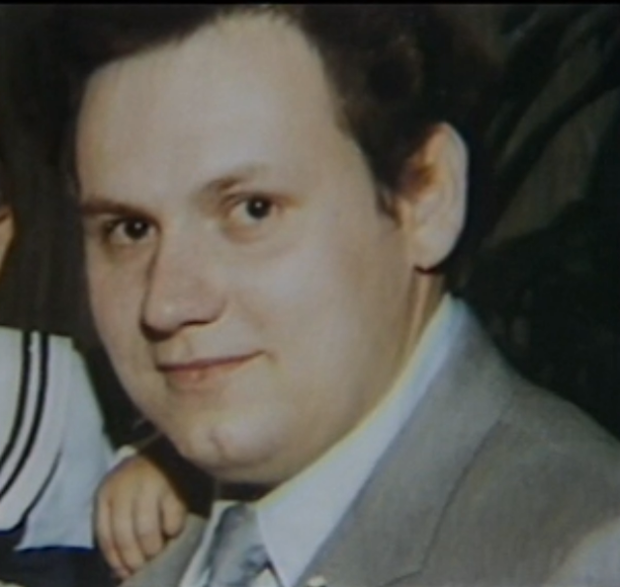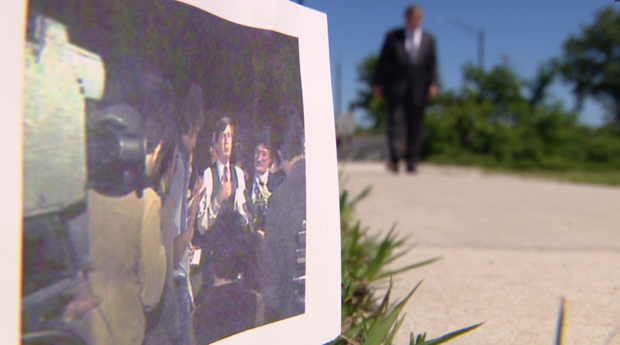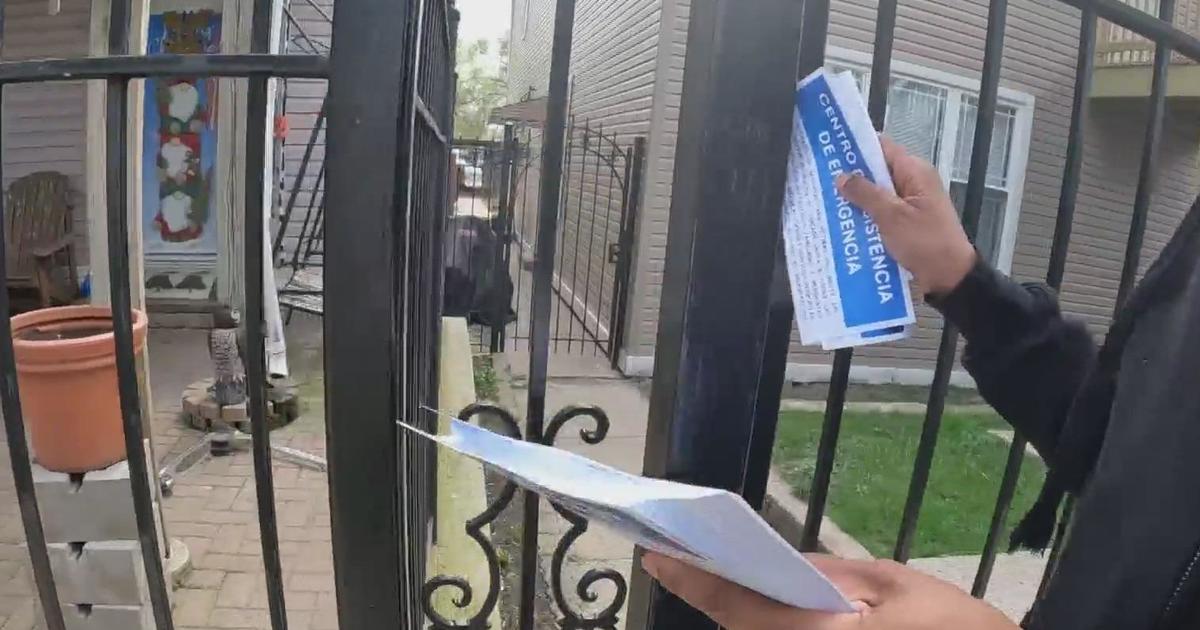Chicago Tylenol murders 40 years later: Unraveling one of the country's most infamous crimes
COMING SOON, 'PAINKILLER': A multipart docuseries about the Tylenol Murders. Watch a preview and learn more about the case.
UPDATE: This coverage was published in September of 2022. On July 9, 2023, prime suspect James Lewis was found dead in his Cambridge residence.
CHICAGO (CBS) – One of the Chicago area's most infamous unsolved crimes began unraveling over 40 years ago in the suburbs.
A young girl from one family and three members of another were all rushed to emergency rooms. Three of them died. One lived for a few days. They had all taken Tylenol capsules before collapsing.
MORE READING: Chicago Tylenol murders: Who did it? No one has ever been charged.
Within hours, public health investigators discovered the cause of those deaths.
MORE READING: Three members of Janus family died in 1982, and pain has passed on to generations
Immediately, a task force of local, state, and national law enforcement personnel formed to find the "madman or madmen" who put the poisonous cyanide in a popular painkiller, randomly killing people.
SEPTEMBER 29, 1982
The case begins when a 12-year-old Elk Grove Village girl, Mary Kellerman, wakes up with a cold and swallows an Extra-Strength Tylenol capsule.
6:33 a.m.: "Caller requested an ambulance for his daughter who had passed out," the Elk Grove Village Fire Department Alarm Report shows.
Elk Grove Fire Records by Adam Harrington on Scribd
When paramedics arrive, they find a "girl passed out in washroom." Elk Grove Police also get called and arrive at the Alexian Brothers Medical Center by 6:38 a.m. and learn the girl's heart stopped on the way to the hospital. Doctors and emergency room staff try to save Mary's life for hours by attempting CPR and inserting a heart pacemaker.
In the meantime, police go to Mary's house, looking for evidence. They find, among other cold medicines, a bottle of Tylenol. Mary's father, Dennis, tells them his wife had bought the bottle at a Jewel store the day before. His daughter had taken pills before she went to sleep and again that morning.
Shortly afterward, "He heard his daughter coughing and what sounded like the family hair dryer fall to the washroom floor."
Elk Grove Police Reports by Adam Harrington on Scribd
Police take all of the cold medicine, including the Tylenol, from the home and lock it up in a sergeant's desk. They learn then from the attending physician that all lifesaving measures failed, and Mary Ann was pronounced dead at 9:56 a.m.
The Cook County Medical Examiner's (ME) office begins investigating. Assistant Medical Examiner Dr. Barry Lifschultz conducts Mary's autopsy the next day. And, by Oct. 1, 1982, he officially determines her cause of death to be the "result of acute cyanide intoxication."
On Sept. 29, about seven miles north and three and a half hours later, another family frantically calls for help. It was 1:33 p.m. and 27-year-old Adam Janus wouldn't wake up from a nap at his Arlington Heights home.
The Cook County ME case report shows the Arlington Heights Fire Department responded to a call from his wife and then transported him to Northwest Community Hospital.
Adam Janus Redacted by Adam Harrington on Scribd
But, by 3:15 p.m., he was pronounced dead by Dr. Thomas Kim. Investigators later learn Adam Janus also recently bought a bottle of Tylenol at a Jewel store.
Later that day, tragedy strikes again at the Janus' Arlington Heights home, according to the ME case report, when another call for help comes at 5:40 p.m.
Police respond to the house for the second time. They discover that Adam's 25-year-old brother, Stanley, "went into the washroom, came out and said, 'I don't feel good,' and with that, collapsed in the arms of his wife in the kitchen."
Relatives ran to a neighbor's house for help. That neighbor happened to be a nurse. They return to the house and find Stanley's 20-year-old newlywed wife Theresa "lying on the floor in the living room with the same symptoms" as her husband. Both are taken to the same hospital as Adam earlier in the day.
Police contact the Village Public Health nurse and they gather up anything that Adam, Stanley and Theresa could have come into contact with that day. The list includes, "Home jarred goods (Cherries, cherry juice, and blueberries), one coffee pot containing black coffee, one plastic bag containing pound cake, and medication."
That medication includes a bottle of Tylenol. Police make note that all three had taken Tylenol before collapsing.
In the meantime, emergency room personnel are trying to save Stanley's life, but he "could not be resuscitated after being worked on for some time." Stanley Janus was pronounced dead at 8:15 p.m.
Stanley Janus Redacted by Adam Harrington on Scribd
Theresa Janus "was resuscitated and put on life support systems." She died three days later.
Ty Fahner was Illinois Attorney General in 1982. He was attending a campaign fundraising event that evening at the Pheasant Run resort in St. Charles. An aide comes out from behind a big blue velvet curtain at the back of the dais and tugs at his jacket.
Fahner recalls his assistant urgently telling him, "You've got to take a call." Fahner tells his assistant, "I'll talk to you later." But, the assistant persists, "You got to go now."
That's when Fahner learns of the poisonings and reacts immediately. He remembers, "It was about eight or nine o'clock at night. I said, we'll get the team together. We put together a list. I got everyone I knew in the Illinois State Police, Sheriff's Association, local law enforcement."
All of those people would eventually make up the Tylenol Murders Task Force. "We had 20, 25 people get together immediately the next morning." Fahner would become the teams' spokesperson and face the media at daily press conferences held at an Illinois State Police bunker in Des Plaines.
SEPTEMBER 30, 1982
Dr. Thomas Kim at Northwest Community Hospital works through the night to figure out what caused four poisonings in the same day among people who had all reportedly taken Tylenol. At 2:45 a.m. he gets an answer.
Blood tests for Stanley and Theresa Janus show high levels of cyanide in their blood, as CBS 2's Camilla Carr reports below.
A short while later, at Good Samaritan Hospital in Downers Grove, a woman who had been brought in and admitted the night before is found with no vital signs at 3:15 a.m.
Mary McFarland, 31, dies eight hours after being brought to the emergency room.
She was working on Sept. 29. Her autopsy report indicates, "Prior to collapsing (at work) the patient had complained of not feeling well and had reportedly taken Tylenol capsules." Lab tests confirm high levels of cyanide in her blood.
Autopsy- M by Adam Harrington on Scribd
By the time the sun rises that morning, four people are dead. Another was on life support, and the list of victims grew longer.
New mother Mary Reiner, 27, of Winfield, was found by her husband showing signs of having a seizure. He calls paramedics and she is rushed to Central DuPage Hospital. Efforts to save her life fail and she dies at 9:03 a.m.
Investigators discover her cause of death to also be acute cyanide poisoning.
Autopsy - R by Adam Harrington on Scribd
Ed Marshall was working the CBS 2 News assignment desk. He remembers: "There was some sort of bulletin from one of the authorities that there was going to be a press conference about a series of poisoning deaths. That was an instant trigger to tell us something big was going on."
The Cook County's ME's office was also testing capsules police recovered from the Kellerman and Janus homes.
Cook County ME's office Chief Toxicologist Michael Schaffer and his team deliver the deadly details.
"We have definitely confirmed the presence of cyanide in two containers of Extra-Strength Tylenol – bottles of 50 capsules."
With that news, "Tips started coming into the Attorney General's office," Fahner recalled.
His office's first call was to the maker of Tylenol, Johnson & Johnson.
"We called them and they pulled everything off the shelves," Fahner said. "They called the Walgreens, all the stores where their product was distributed. They got it off the shelves."
It's now been a little more than 24 hours since the first poisoning and five people are now dead. A sixth person is on life support. Cyanide has been discovered in victims' blood samples and in Tylenol capsules.
The focus now urgently shifts to warning and protecting the public, as CBS 2's Phil Walters reports below.
"Everything stopped and all we did was focus on this one story," Marshall said.
For reporters covering daily developments at a time before the internet, cell phones and social media, it was a struggle to get information to the public in a timely manner.
"All we had were old-fashioned phones," Marshall remembered. "It was like being in a boiler room. Phones were constantly ringing. You'd have reporters calling in. You'd have photographers calling in. You'd have law enforcement calling in."
"I mean you were working at hyper-speed. Your job was to try to find out, what was the source of this mystery? Why were these people dying?" Marshall continued. "I just remember that there was a sense of shock in the community because these people were dying unexpectedly."
OCTOBER 1, 1982
Now, that the public was getting word that they should toss out Tylenol or drop bottles off for testing, Fahner's focus shifted to following leads and finding the killer or killers.
"We're going to turn our attention the madman or madmen who are responsible for this sick behavior," he said 40 years ago.
Today, he remembers those press conferences.
"You go out there because there was this great hunger to know what was going on, and so for a week or so, we would go out and the media would assemble in the parking lot out in Des Plaines," he said. "I would give a commentary or a status."
Fahner recently revisited the Des Plaines location with the CBS 2 Investigators. Today, the building is gone. It is now just a grass-covered vacant lot.
But his memories remain.
"This is where the media would set up with all their cameras and things and when they were ready, I would come out and give them my report, answer some questions, go back in," Fahner said.
In 1982, he said, "We were drawing like literally 300 or 400 tips a day into there as to who might have been crazy and done stuff like this."
On this third day after the poisonings began, Theresa Janus was taken off life support and died at 1:15 p.m.
Later that evening came the discovery of a seventh victim – this time in Chicago's Old Town neighborhood. Carol Prince found her sister's body around 5:45 p.m. and called police.
Paula Prince, 35 years old, was a United Airlines flight attendant who hadn't been heard from in days.
CBS 2 legendary reporter, John "Bulldog" Drummond was working that night and got a tip from a source.
"He said, she's in her apartment right now," Drummond said. "I was at the station. I went over immediately with a crew."
He recalled how emotional it was seeing her body being carried out of the condo building on a stretcher.
"That hit home," Drummond said. "When you saw the victim in a canvas bag, obviously deceased, it hit hard."
Prince was officially declared dead by the Medical Examiner's office at 6:45 p.m. Investigators discovered a bottle of Extra-Strength Tylenol in her bathroom with one capsule missing and a receipt from the Walgreens at 1601 N. Wells St. dated three days earlier. That date was Sept. 29.
Below, CBS 2's John Davis reports on Prince's horrific death.
OCTOBER 2, 1982
This day marked the end of any more murder victims connected to the pain killer. But the investigation continued, and the public desperately wanted answers. As time went by, investigators became more frustrated because they were unable to arrest the person responsible for the crime.
Today, Fahner remembers the Tylenol tragedy as perhaps the first domestic terrorism incident in this country.
"When someone gets killed, usually there's an intent to kill that person or someone like that person. This was totally random – put the deadly poison in commerce and see who drops," Fahner said, "and that was frightening. It was very, very frightening."











